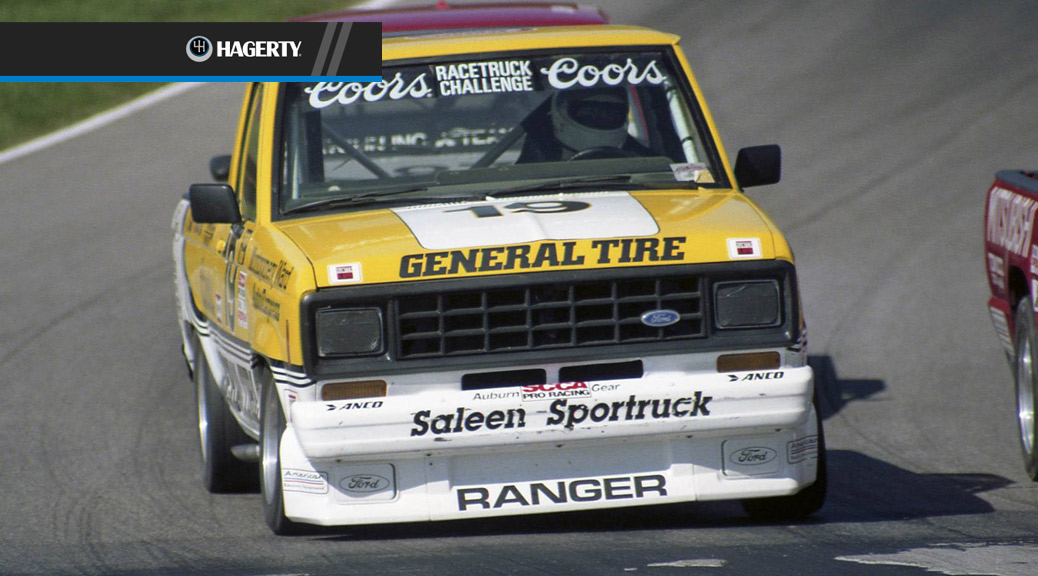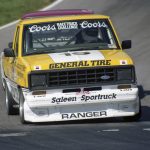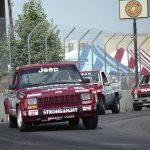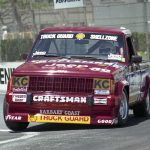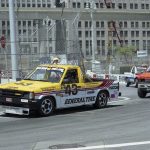The SCCA RaceTruck Challenge was Pole Position Mayhem
By: BENJAMIN HUNTING on October 02, 2018
Original Article: HAGERTY.COM
Long before Stadium Super Trucks entered the global racing consciousness, and in a time predating even NASCAR’s involvement in pickup racing, the Sports Car Club of America unveiled perhaps the most unusual professional class in its long and storied history. It was a tightly-contested battle between the least likely of competitors: high-riding four-cylinder trucks not all that different from what you could drive home right off the showroom floor.
The SCCA RaceTruck Challenge—initially branded by Coors, then redubbed the SCCA Truck Guard Shellzone Challenge a few years later—started in 1987 and ran through 1991. During that time, it gathered together a who’s who of the mini-truck world, including nine different automakers represented (with varying degrees of official sanction) that fought it out over the course of the season across the United States. During its five-year tenure, the series would support both the open-wheel CART championship as well as Trans-Am, in addition to being featured on its own alongside other classes of competition on SCCA weekends.
Nearly stock
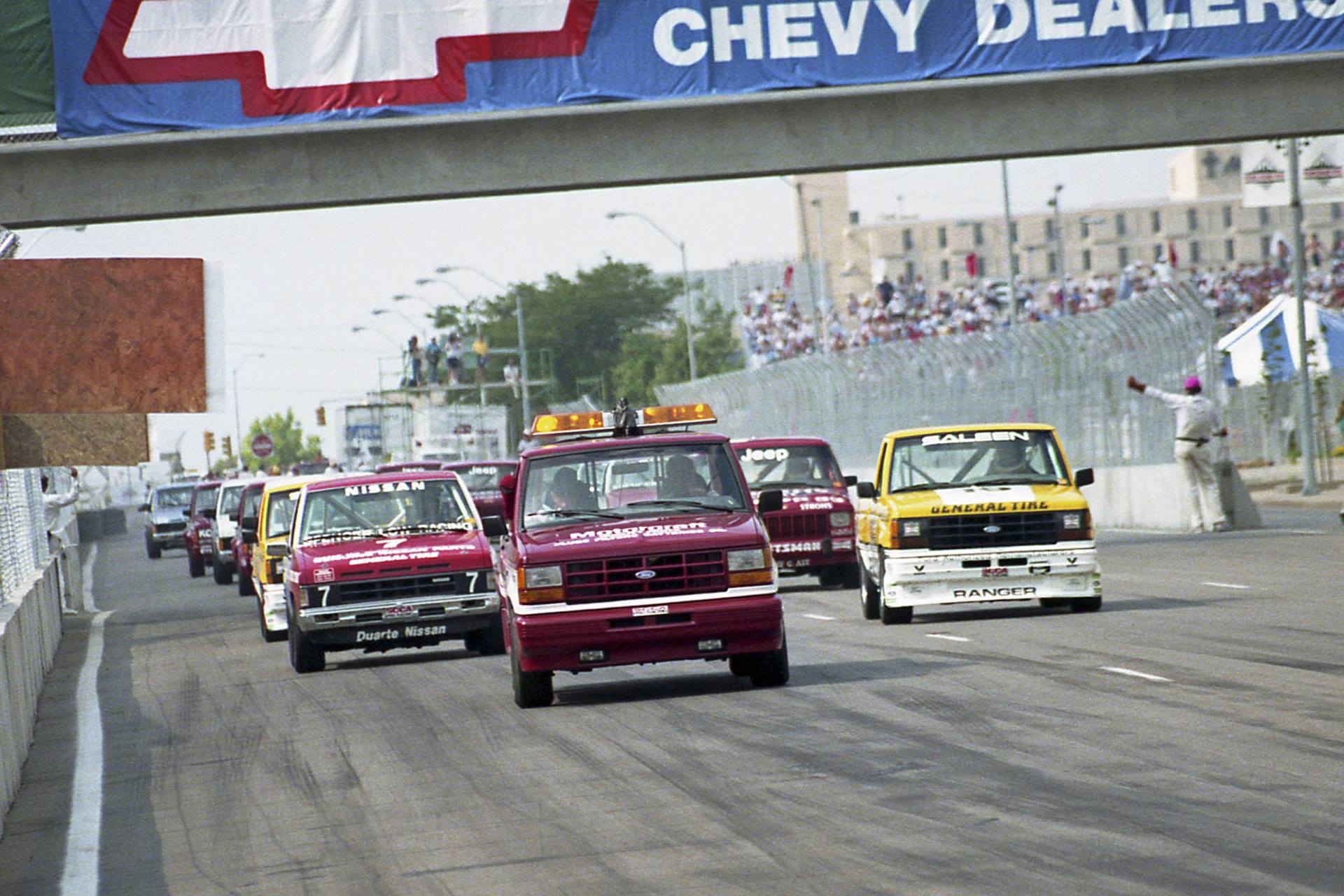
Like any racing series, the RaceTruck Challenge had its own set of rules. But the list of prohibitions loomed especially large when it came to the degree of modifications that teams were permitted to make to each of the trucks. Striking a balance between a Showroom Stock class and one that recognized that, “Hey, maybe pickups aren’t quite ready to tackle a high speed corner right out of the box,” RaceTrucks were allowed to swap in stiffer bushings, more appropriate shocks, and make a few other tweaks to the vehicle’s suspension. As long as trucks remained eight inches off of the ground, as measured from the rocker panels.
Under the hood, everything had to stay stock, although teams could reassemble or “blueprint” their engines rather than run a sealed factory unit. The trucks were strippers, featuring torn-down interiors and zero options, with A/C and other niceties left off of the order sheet. They ran full cages, race seats, and steering wheels, and used racing pads and shoes. Yes, that means the rear brakes were drums, just like the ones sitting on the dealer lot.
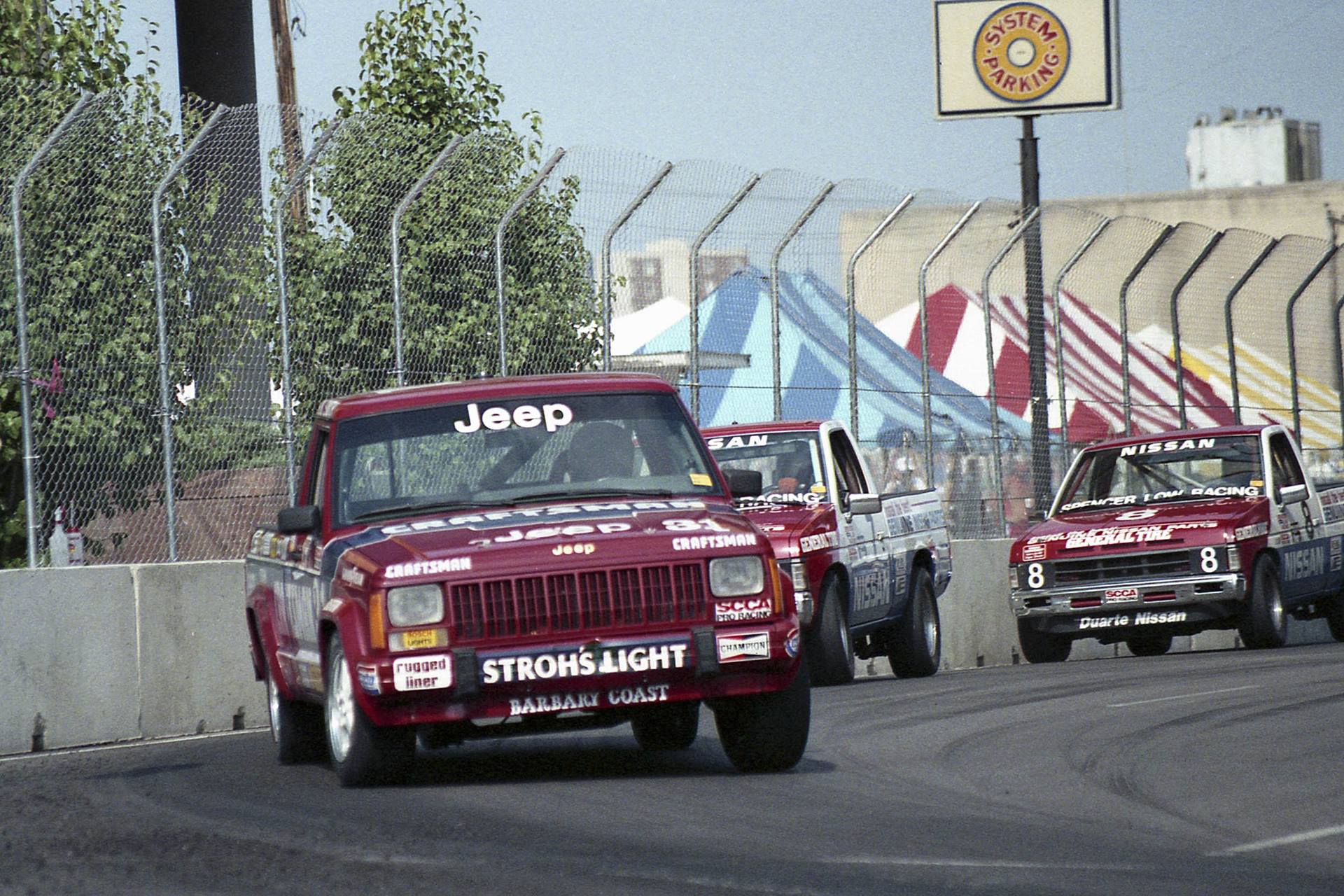
Stock horsepower was far from evenly distributed across the models that lineup up for the SCCA RaceTruck Challenge. At one end of the spectrum were pickups like the Dodge Ram 50/Mitsubishi Mighty Max, Jeep Comanche, Mazda B2300 and the Ford Ranger (campaigned under a Saleen badge with none other than Steve Saleen himself behind the wheel), which offered 110–120 ponies, while others from Isuzu were below the century mark. Hovering in between were entries like the Nissan D21 and the Toyota Truck, forcing the SCCA to introduce weight handicapping—sometimes by adding nearly 200 pounds of ballast to the quickest truckst—to even out the field.
Minimal power, maximum fun
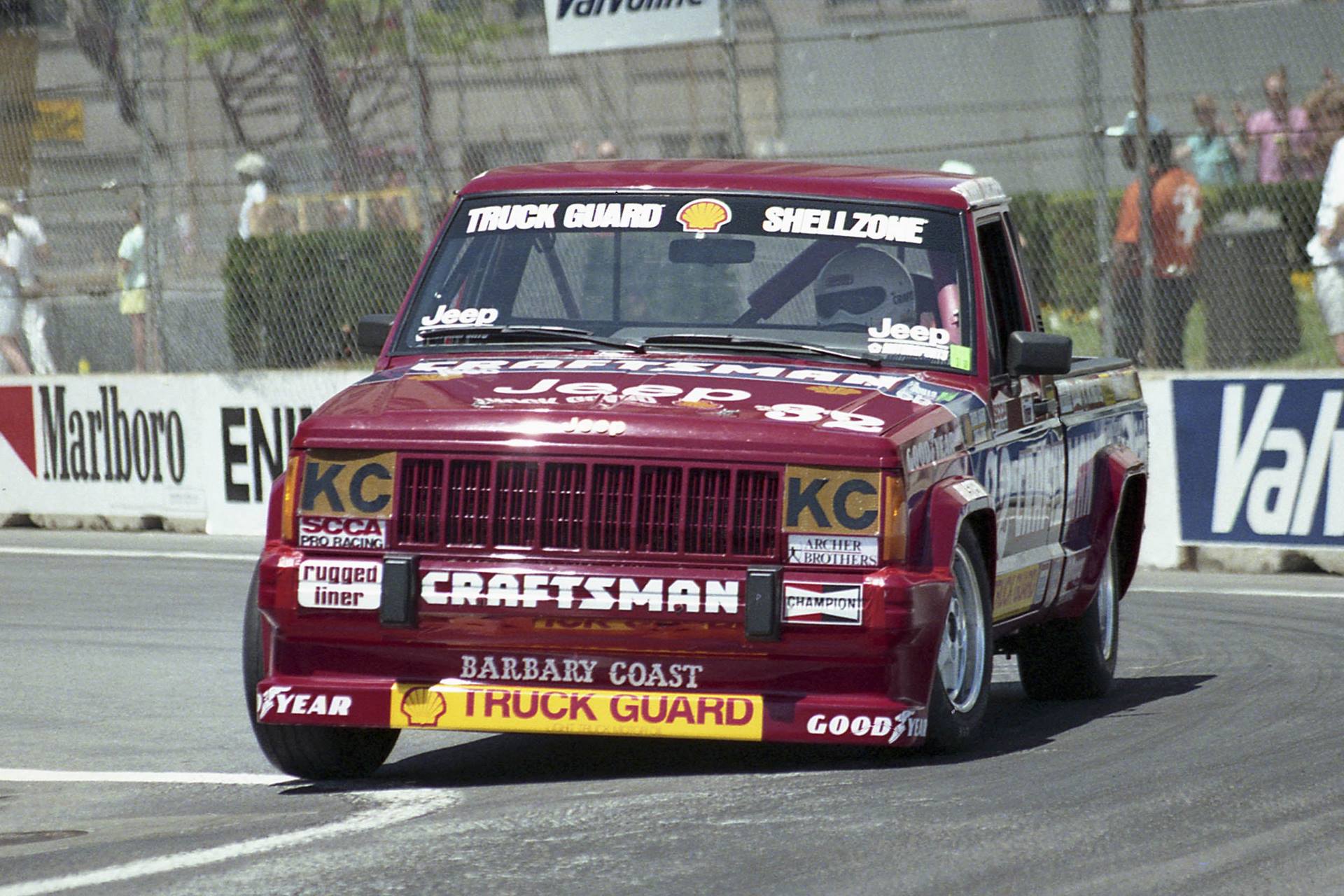
The racing itself was fun to watch, and if you weren’t able to be there in person during the Racetruck series’ heyday, then you can catch highlights on YouTube. There was banging, sliding, numerous lead changes, and five-wide dashes down the front straight. Not the grippiest of steeds, to be sure (considering their weight concentrated forward of the center axis), nor the most aerodynamic despite air dams and other ground effects, the pickups relied on luck and the skill of their drivers rather than raw power or flashy top speeds to carry the day.
Typically, events ran 25 laps, although on longer and shorter courses that number could be massaged to keep things around the 50-mile mark. Tracks that saw Challenge competition included Mosport, Road Atlanta, Sebring, Mid-Ohio, Texas World Speedway, Las Vegas International, Laguna Seca, and Sears Point.
It was a remarkably even series in terms of both individual accomplishments and the manufacturer standings. Nissan won twice in a row (after having lost by one point to Jeep in 1988), along with two drivers championships (including the inaugural by driver Max Jones). Steve Saleen’s remarkable 5-of-6 win effort sealed the overall crown for Ford in ’91 (previous seasons contained 9–11 races).
While the RaceTruck Challenge was definitely entertaining, the field shrank as time went on, dropping from a high of 19 trucks entered per event during the 1988 season to 10 the final two years. Mitsubishi dropped out by ’89, and Toyota was gone a couple of years later. Flagging interest spelled doom, and 1991 was the final season of the RaceTruck Challenge.
Looking back, looking ahead
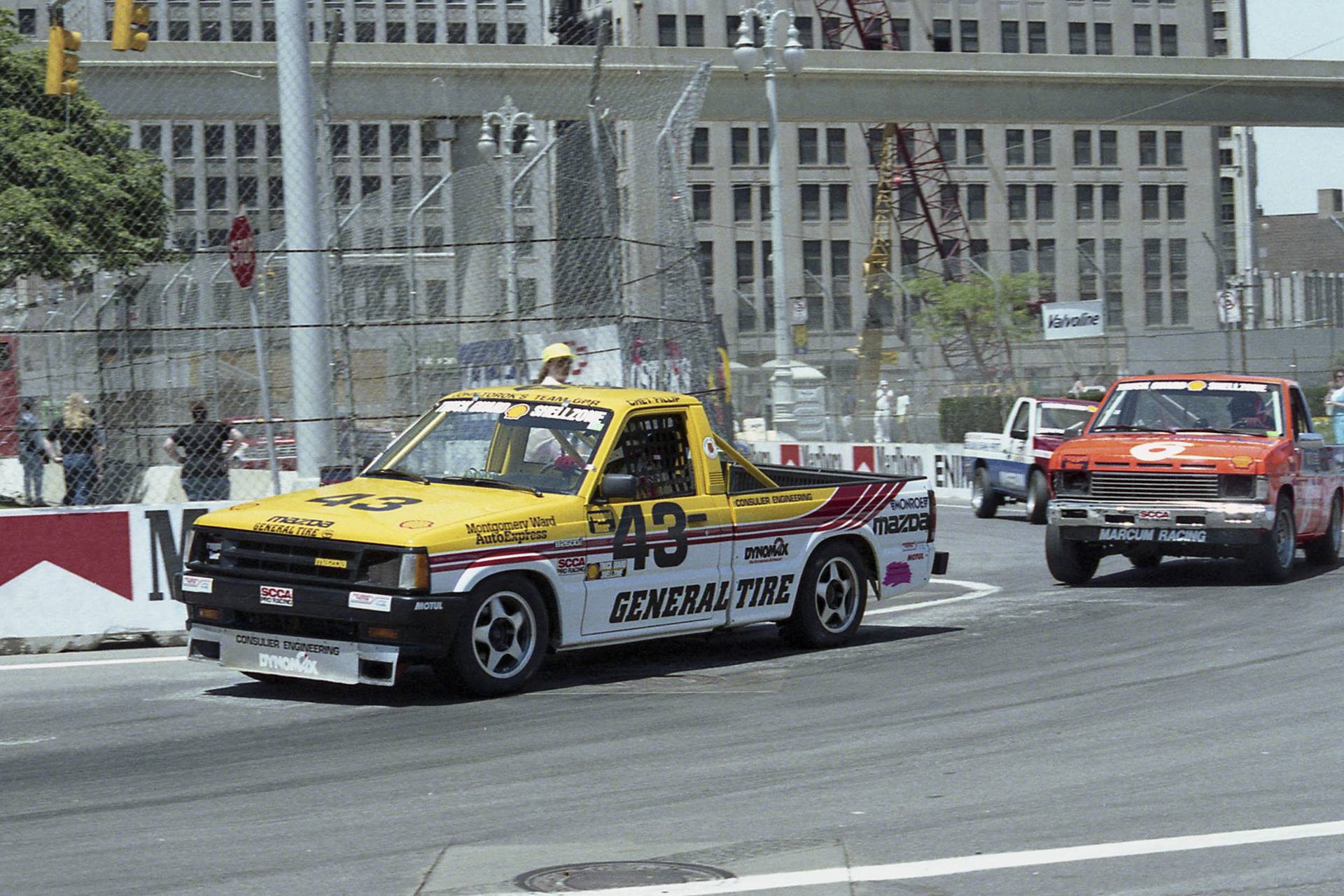
The legacy of SCCA RaceTrucks soon bore fruit. Jeep would produce the Comanche Eliminator from 1988–92, a two-wheel drive street warrior that delivered 177 horsepower and 224 lb-ft of torque from a 4.0-liter straight six, while Saleen would build a handful of hopped-up Ranger Sport Trucks. Whether GM’s limited experience in the series (the Chevy S-10 was a late entry) would have anything to do with the genesis of the turbocharged GMC Syclone is anyone’s guess, but at the very least the Challenge proved that there was an interest in mini-trucks that did more than just haul.
Looking at the pickup market today reveals intriguing potential for a revival of a similar-type road racing grudge match between brands like Toyota and Nissan, who never gave up on the entry-level truck segment. Meanwhile, Chevy is back with the Colorado and Ford is joining the re-joining the party with the U.S.-market Ranger—both automakers briefly turned their backs on anything smaller than full-size. Although today’s mid-sizers are significantly larger than anything RaceTruck-related, power plants are also much mightier, raising both the stakes—and the ride heights—for potential pole position mayhem.
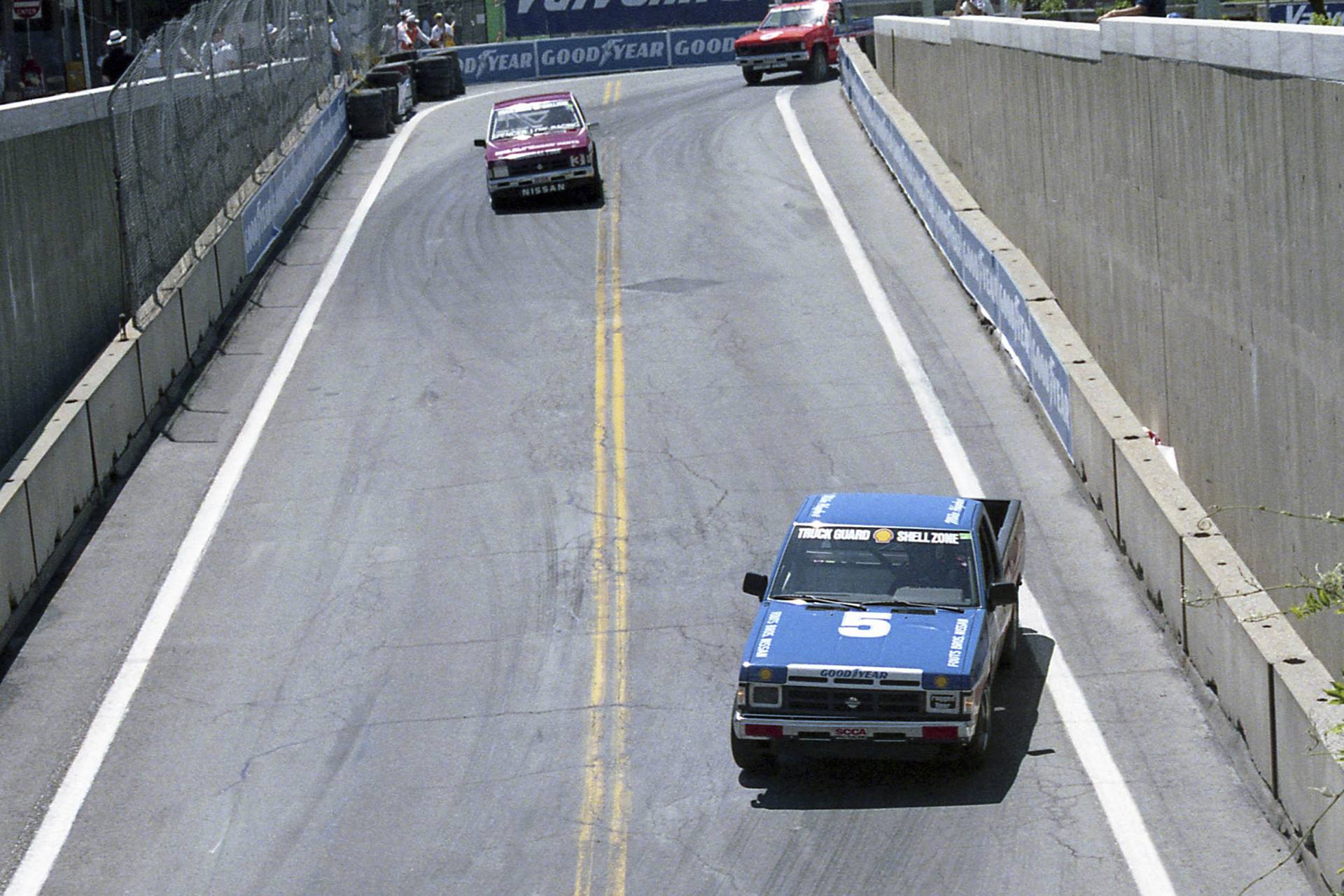
Click here to participate in the discussion.
[Source: Hagerty]

